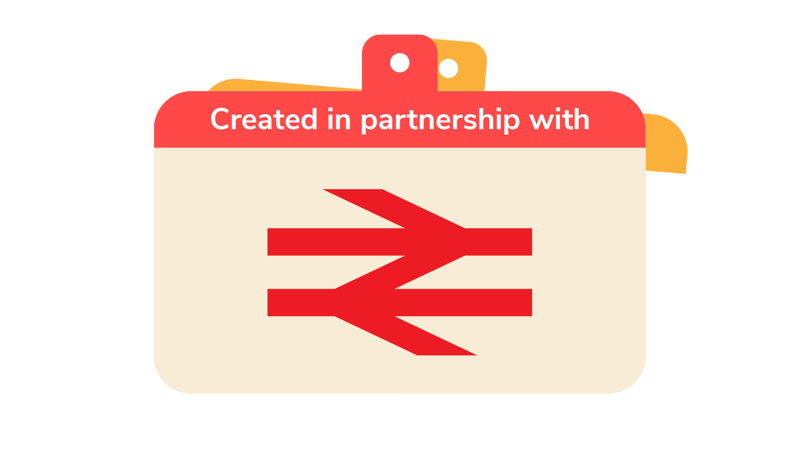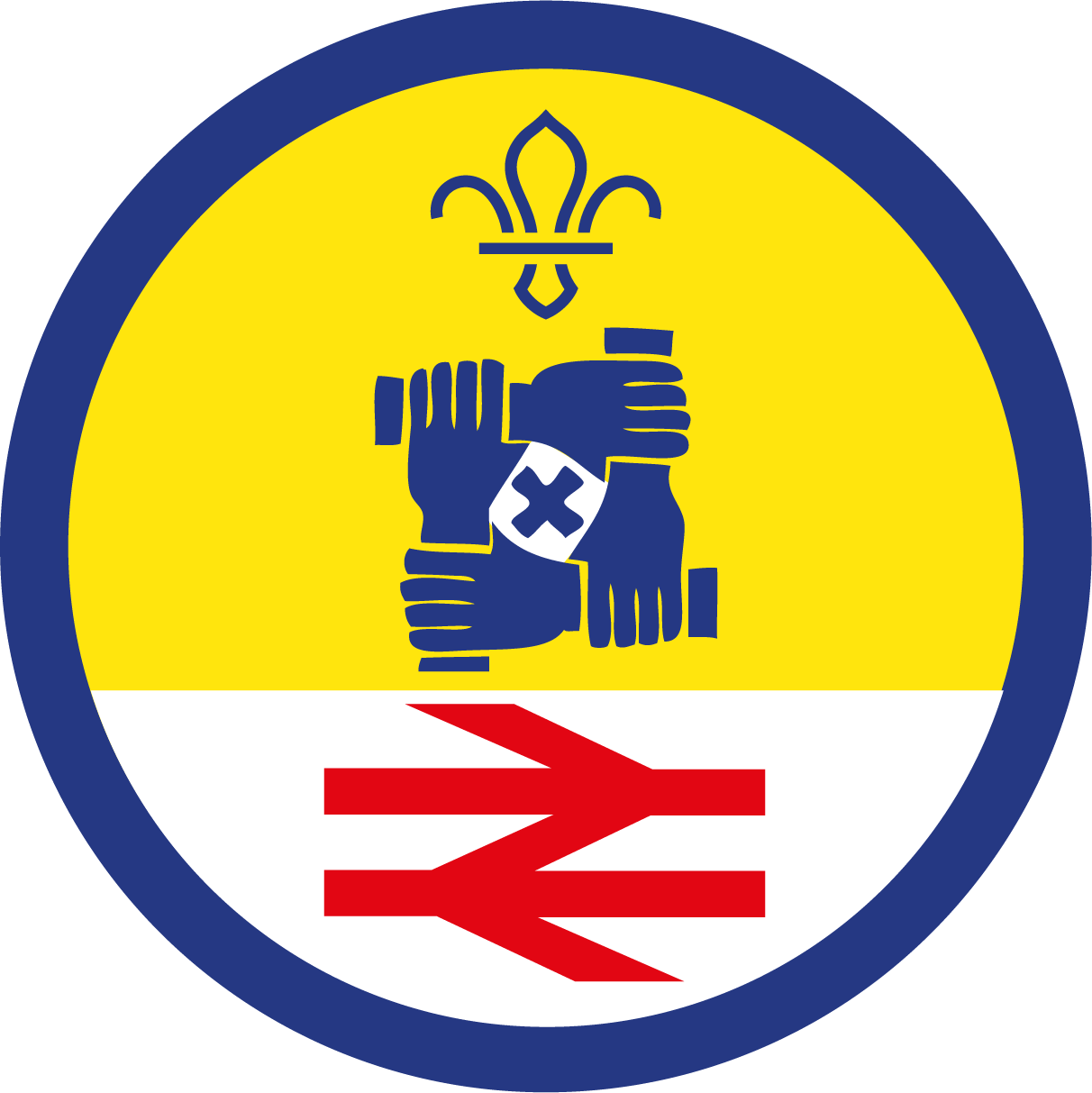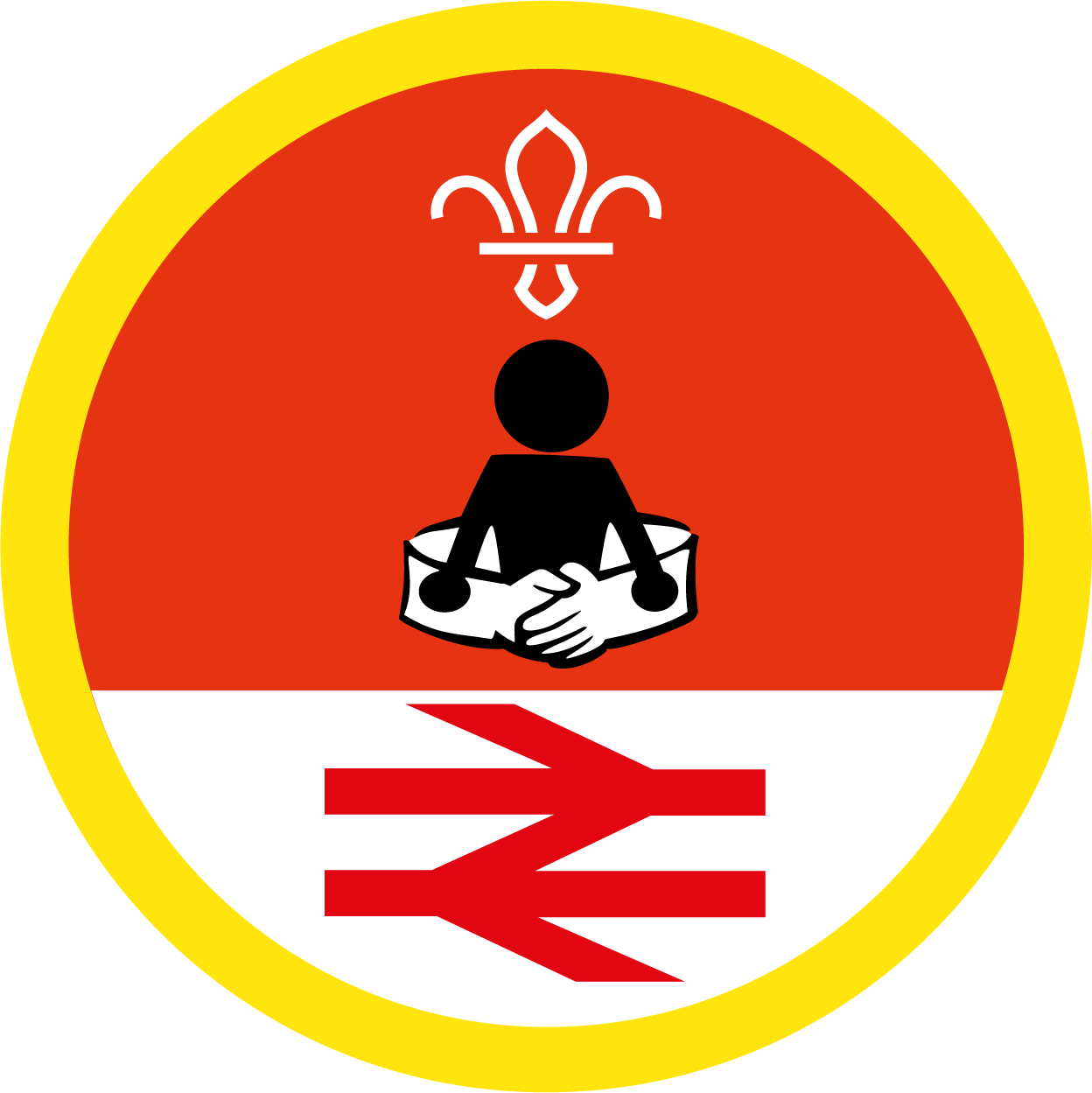
Play train controller crossing
You’ll need
- Cones or something to mark a starting point, end point, and railway danger zone
- Torch
Before you begin
- Use the safety checklist to help you plan and risk assess your activity. There's also more guidance to help you carry out your risk assessment, including examples.
- Make sure all young people and adults involved in the activity know how to take part safely.
- Make sure you’ll have enough adult helpers. You may need some parents and carers to help if you’re short on helpers.
Planning and setting up this activity
- Make sure you’ve plenty of room to play this game, as people will need to cross the entire space.
- Mark out a starting line and finishing line using chalk, masking tape or cones.
- Around two thirds of the way from the starting line, using chalk, masking tape or cones, mark out two lines across the space that are about 1m apart. This’ll be the ‘railway danger zone’.
Story time
- Everyone should sit in a circle.
- Someone should read the first five pages of ‘Arlo’s Adventures – There and Back’ by Bessie Matthews.
- After reading the story, everyone should take some time to reflect on it as a group. We’ve included some questions to help you reflect in the pink box below.
- Once you've read the story, try playing the game ‘Play train controller crossing’.
Running this activity
- Gather everyone together and explain you’re going to be playing a game about railways. Choose one person to be the ‘train controller’. The ‘train controller’ should be on the finish line.
- Everyone else needs to be on the starting line.
- The aim of the game is to tag the ‘train controller’ without getting caught. People will need to cross the room, but if the ‘train controller’ sees them moving or in the railway danger zone, then they’ll need to go back to the start.
- Ask everyone what the railway danger zone might be. It could be somewhere you must never go, such as on the railway tracks or a level crossing.
- The ‘train controller’ should be holding a torch and face away from the group, so they can't see them.
- With their back turned to the group, the ‘train controller’ shouts ‘Green Light’. Everyone should move towards the finish line.
- The ‘train controller’ can do one of two things:
- After a few seconds, they can flash the torchlight somewhere that everyone can see it. This signals to players they have 5 seconds until the ‘train controller’ turns around. Anyone in the railway danger zone must try and get out of it by moving backwards out of the zone and freezing before the ‘train controller’ turns around.
- After a few seconds, they can just shout ‘Red Light’, then turn around quickly. Everyone must immediately freeze or stop moving. If any player is in the railway danger zone when the ‘train controller’ turns around, they must go back to the starting line.
- When the caller turns around, if any players are seen to still be moving, the ‘train controller’ can identify them, such as by pointing at them. They must go back to the starting line to begin again.
- If any player is in the railway danger zone when the ‘train controller’ turns around, they must go back to the starting line.
- The first person to tag the ‘train controller’ at the finish line wins.
Reflection
The story is about making safe choices at the railway. Remind the young people that railways are safe, but we need to be smart and do our part to keep ourselves and others safe when around them.
Ask everyone to think about:
- What was the unsafe choice and the safe choice that Arlo made?
- What are some other good choices you can make around the railway?
Give the young people space to share their own stories about being at the railway.
This game encouraged everyone to be active and problem solve to follow the actions that are called out and not get caught.
Ask everyone to think about:
- Was it hard to not get caught?
- How did it make you feel when you were caught?
- Did you feel extra nervous crossing the railway danger zone? What did you do to keep yourself safe in that zone?
Safety
All activities must be safely managed. You must complete a thorough risk assessment and take appropriate steps to reduce risk. Use the safety checklist to help you plan and risk assess your activity. Always get approval for the activity, and have suitable supervision and an InTouch process.
- Active games
The game area should be free of hazards. Explain the rules of the game clearly and have a clear way to communicate that the game must stop when needed. Take a look at our guidance on running active games safely.
- To make this activity easier, you could play the game without the torch and when the ‘train controller’ shouts ‘Red Light’, they could always give players 5 seconds to get out of the railway safety zone.
- To make this activity harder, you could have people in the middle pretending to be the level crossing barriers. They could create an archway with their arms or pool noodles for people to go through to get in and out of the railway danger zone.
- Think about how everyone will move around the space. If some of the group would find it difficult to balance on one leg, you could ask everyone to stand as still as they can instead.
- Remind everyone that the aim of the game is for everyone to reach the finish zone, it’s not a race. You could remove the competitive element and ask people to try to get to the other side without getting caught, then reward everyone who makes it across. You could also reward good teamwork, effort and balance.
All Scout activities should be inclusive and accessible.
If you enjoyed this activity, why not learn more about railway safety with our other activities from The Rail Industry




